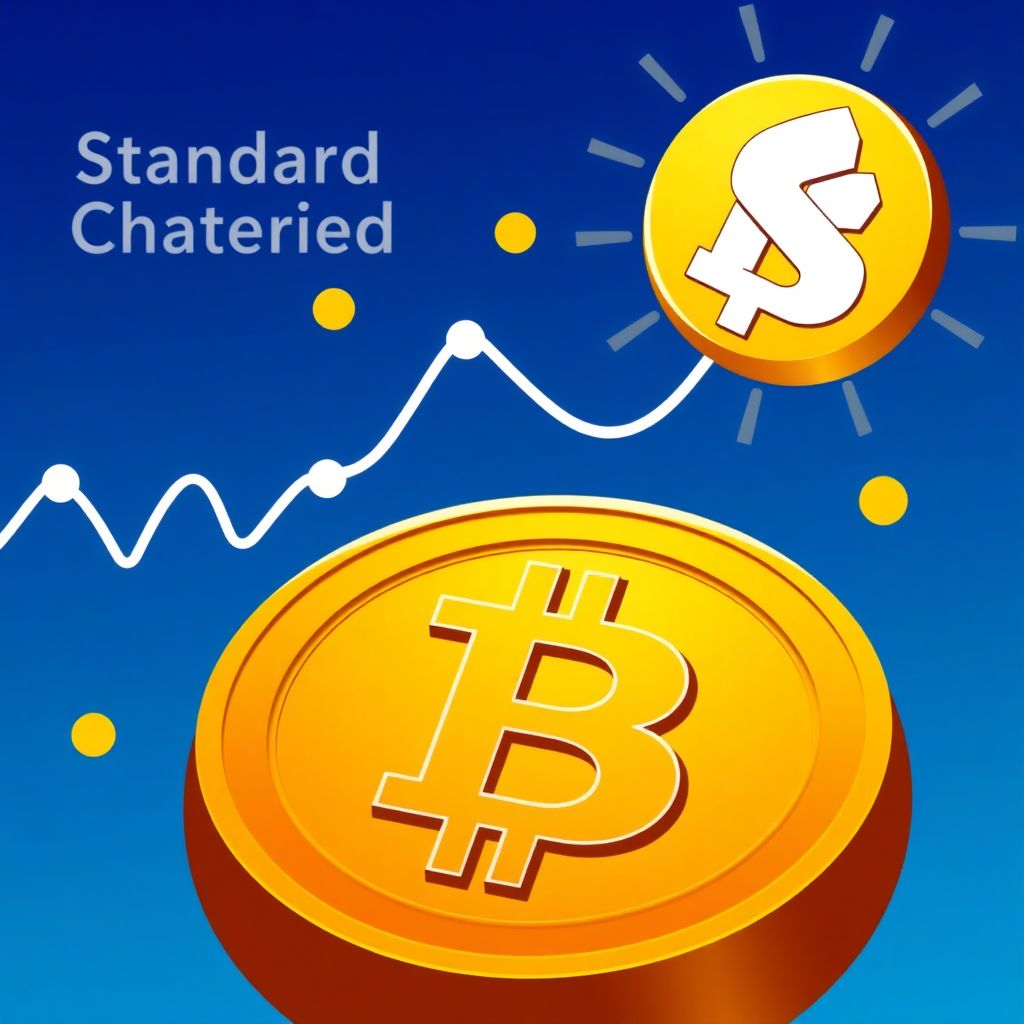Standard Chartered forecasts that the market for tokenized real-world assets (RWAs) will soar to $2 trillion by 2028, equaling the projected capitalization of the stablecoin sector. This expected surge reflects growing institutional interest and the accelerating integration of blockchain infrastructure into traditional financial systems.
The bank’s latest research highlights a paradigm shift, with more capital and payment systems transitioning to decentralized finance (DeFi) frameworks, which are perceived as more efficient, transparent, and resilient compared to traditional finance (TradFi). According to the report, tokenized RWAs—digital representations of physical or financial assets stored on blockchain—are poised to become a cornerstone of this shift.
Currently valued at approximately $35 billion, the RWA market would need to expand more than 57-fold to reach the projected $2 trillion mark within the next three years. This ambitious growth trajectory is underpinned by the increasing use of blockchain for tokenizing various asset classes, including real estate, commodities, corporate bonds, and equities.
Standard Chartered’s global head of digital assets research, Geoff Kendrick, emphasized that the evolution of stablecoins and DeFi infrastructure is fundamental to the growth of tokenized assets. “Stablecoin liquidity and DeFi banking are critical enablers of rapid RWA expansion,” he noted. As more liquidity enters the DeFi ecosystem, it catalyzes the creation of new financial products, which in turn attract further liquidity, creating a virtuous cycle of innovation and adoption.
The bank’s projection breaks down the $2 trillion tokenized RWA market into several categories: $750 billion is expected to be allocated to tokenized money-market funds, another $750 billion to tokenized U.S. equities, $250 billion to tokenized U.S. investment funds, and the remaining $250 billion to less liquid assets like private equity, real estate, corporate debt, and commodities.
Meanwhile, the stablecoin market continues to show robust growth, recently surpassing a total supply of $300 billion as of October 3. This marks a 46.8% increase since the beginning of the year. Stablecoins, which are blockchain-based tokens pegged to fiat currencies, play a pivotal role in DeFi by serving as a stable medium of exchange and a gateway for institutional and retail investors.
Standard Chartered believes that the current trends indicate the beginning of a self-sustaining growth cycle in DeFi. As more products and services emerge within the decentralized ecosystem, they attract additional capital, which further enhances liquidity and fosters product innovation.
Despite the promising outlook, the bank also cautions that regulatory uncertainty continues to be a major obstacle. The report warns that without clear and comprehensive crypto legislation—particularly in the U.S.—the growth of tokenized RWAs could be stunted. Delays in regulatory clarity, especially if the next political administration does not prioritize crypto regulation, could limit institutional adoption and discourage investment in the sector.
Beyond the figures, the rise of tokenized RWAs represents a broader transformation of the financial sector. By leveraging blockchain’s transparency and immutability, tokenization allows for fractional ownership, faster settlement times, and greater global accessibility. This democratizes investment and opens new avenues for capital formation, particularly in traditionally illiquid markets.
Institutional players are increasingly exploring tokenized assets not only for efficiency but also to gain exposure to new asset classes with enhanced liquidity. For example, tokenized real estate allows investors to participate in property markets without the need for large capital outlays or complex paperwork.
Moreover, tokenization holds potential for improving financial inclusion. By lowering barriers to entry and enabling fractional investments, it allows individuals in emerging markets to participate in global financial systems that were previously out of reach.
Another important aspect is the role of interoperability. As more blockchains and DeFi protocols adopt common standards for tokenized assets, the liquidity and usability of RWAs will improve. This could lead to new financial products that seamlessly integrate tokenized securities, stablecoins, and decentralized applications.
The increasing alignment between DeFi and traditional finance through tokenization also paves the way for hybrid systems. These could combine the trustless execution of smart contracts with the regulatory safeguards of centralized oversight, offering the best of both worlds.
In conclusion, Standard Chartered’s projection of a $2 trillion market for tokenized RWAs by 2028 underscores the rapid maturity of blockchain-based financial infrastructure. While challenges remain—particularly on the regulatory front—the convergence of stablecoin liquidity, DeFi innovation, and institutional interest suggests that the tokenization of real-world assets is not just a passing trend, but a foundational shift in global finance.

